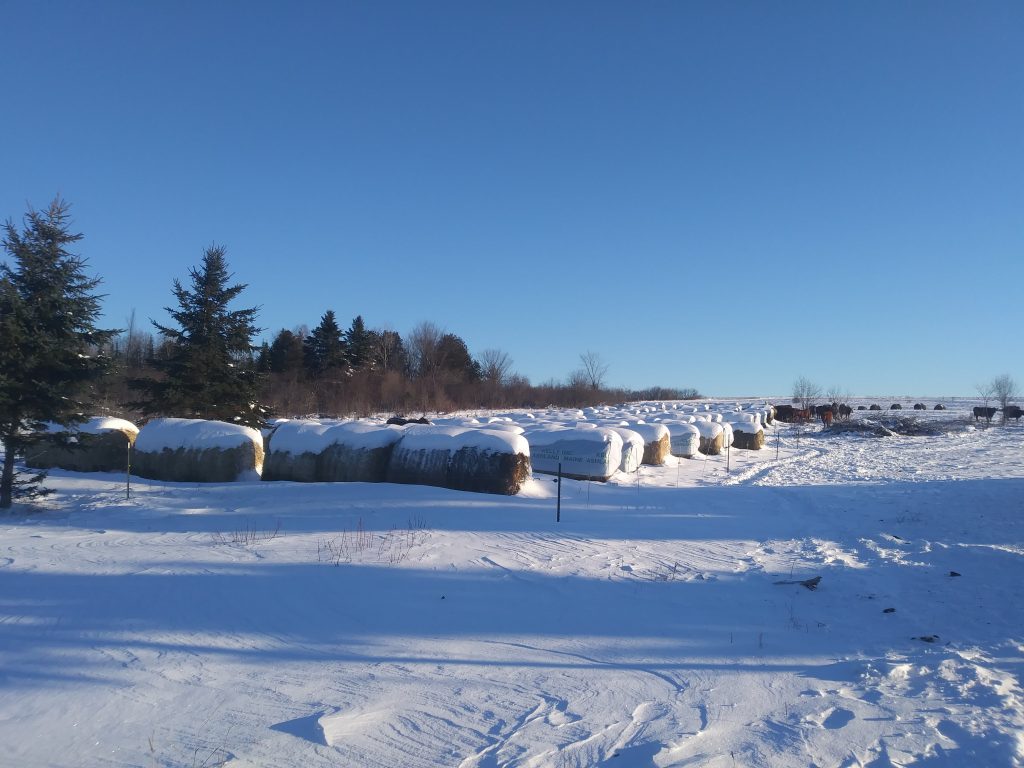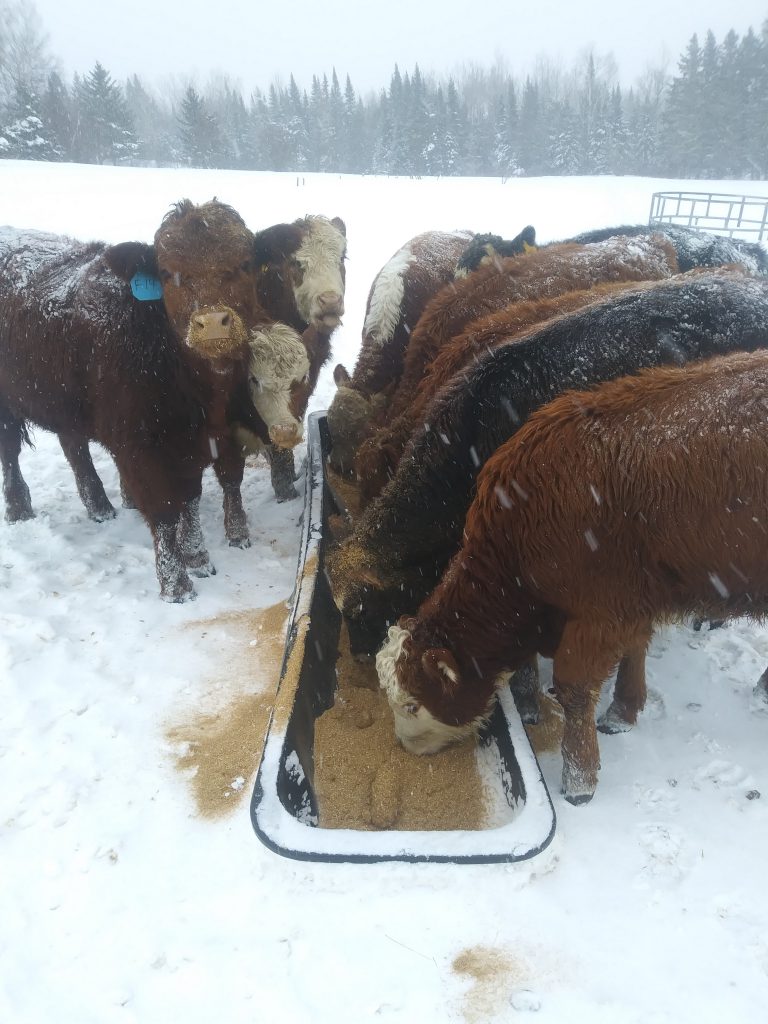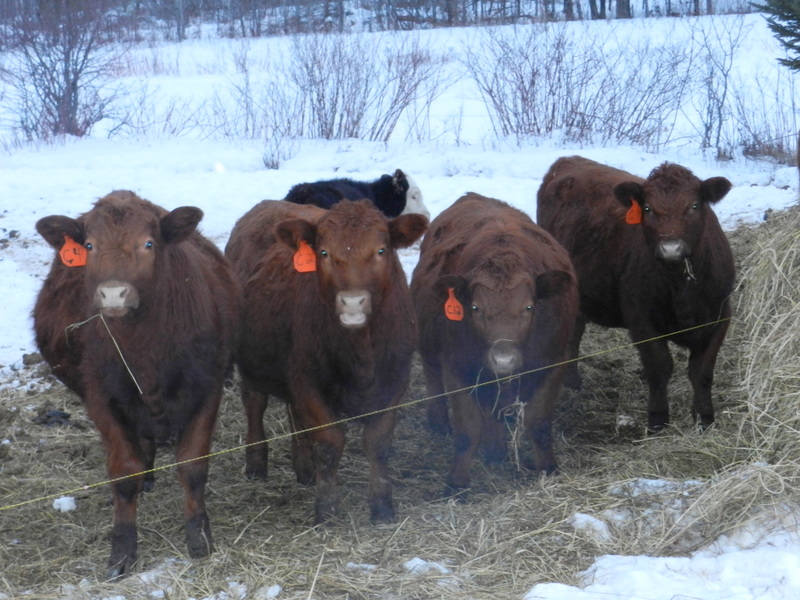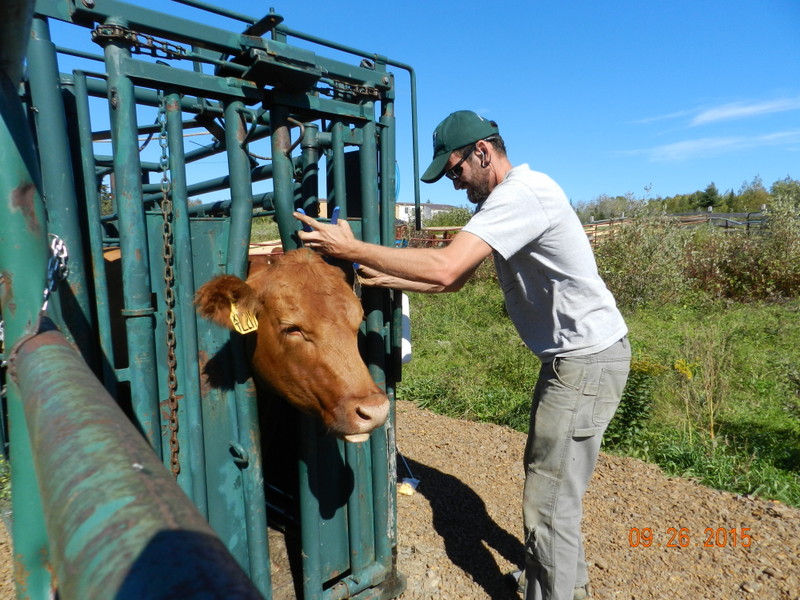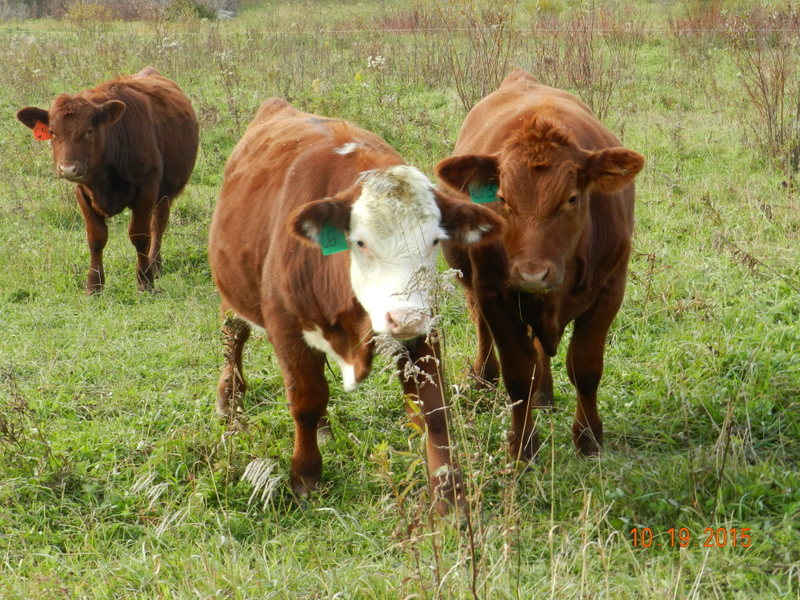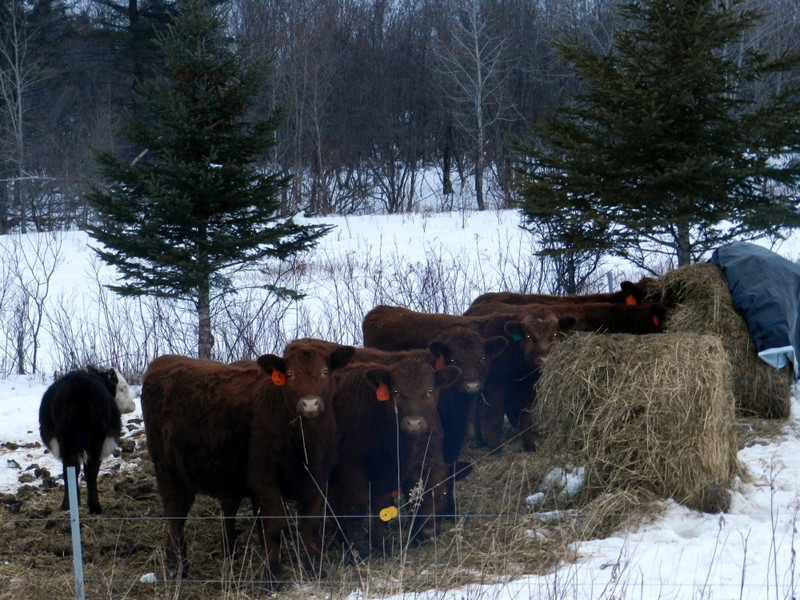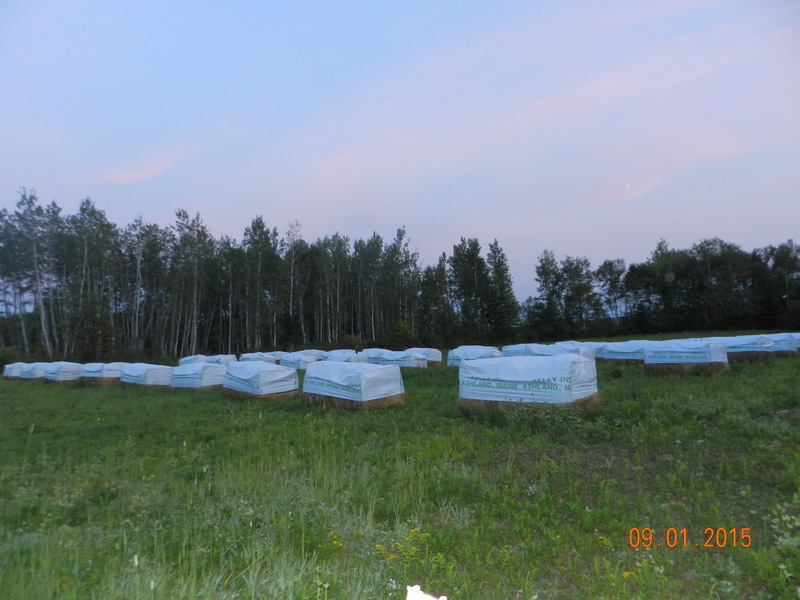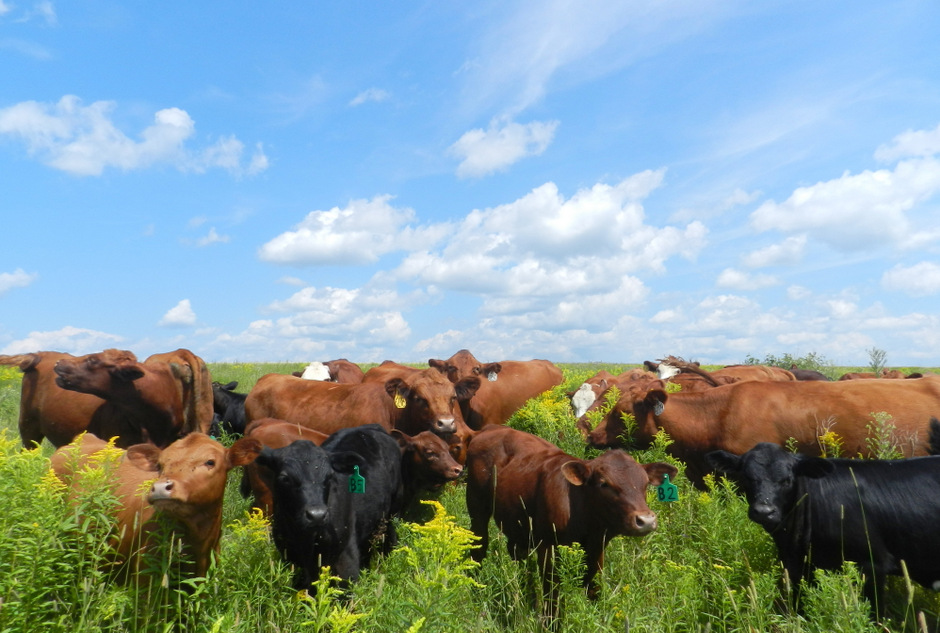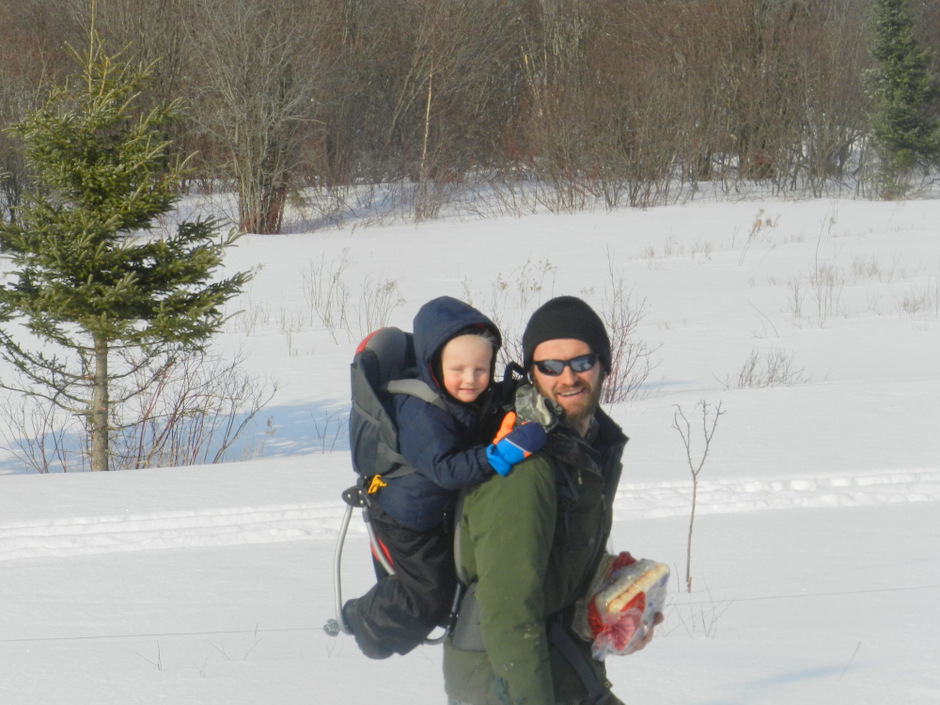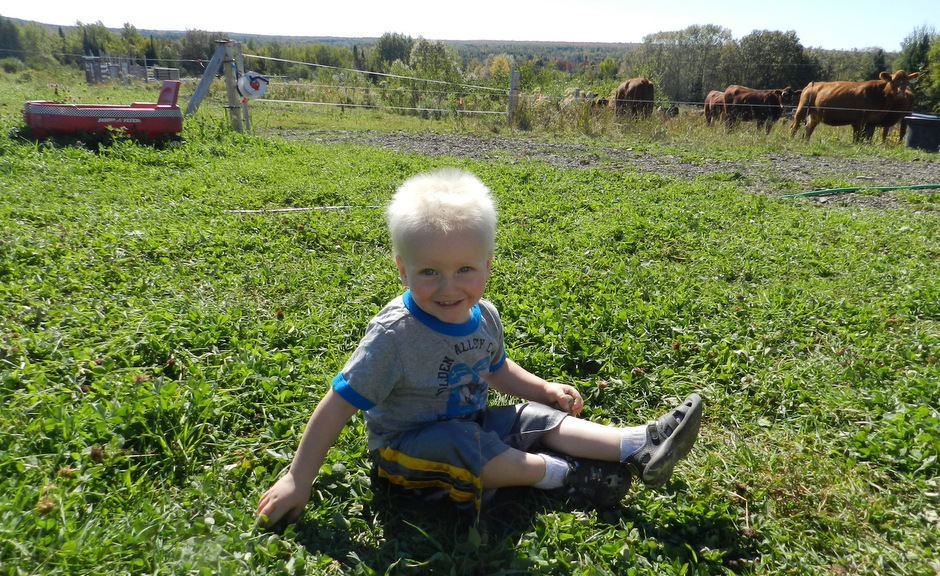Today, I talking about staying warm on the farm during the winter and having a good pair of Carhartt Women’s Insulated Bib Overalls.

If you have read any of our blog posts from November to May, you know that we live in an area of the country that for half of the year, it is very cold and very snowy.
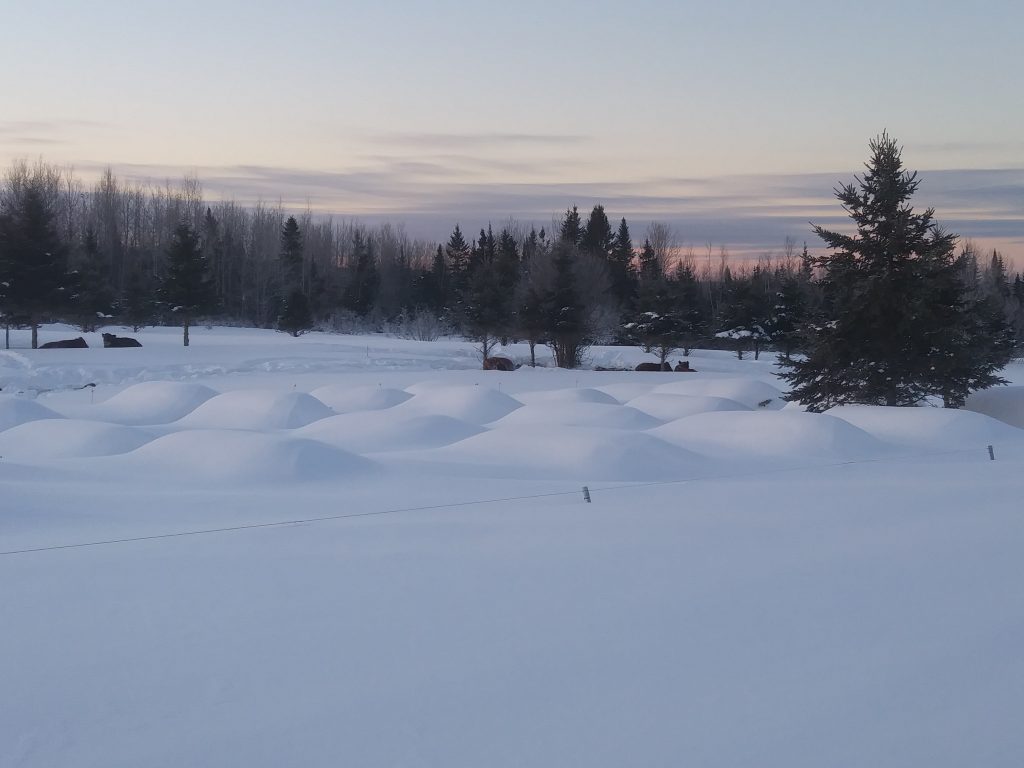
Dealing with the winter conditions here in Northern Maine is difficult enough, let alone when you are running a cattle operation.
You have got to have the right winter gear. I tried for years to save money and use my spring/fall rain pants over jeans or sweats. Finally, I admitted that it just was not warm enough or efficient enough. I needed what my husband already had: winter bib overalls but for WOMEN.
Now, for my husband, he spends a tremendous amount of time in the outdoors during the winter, for farm work, non-farm outdoor activities, and HIS FULL-TIME JOB, as a biologist that does lots of field work, year-round, especially in the winter months. Therefore, he has the Carhartt Men’s Yukon Arctic Quilt Lined Zip to Waist Bib Overalls, rated for extreme cold.
If he isn’t in the house or one of his offices, he is outside in these overalls! He has been very pleased with quality of material, and how warm he stays, while still having the ability to move freely and comfortably.
As for me, I was looking for anything that would be an upgrade from my NO-POCKETS, rain pains over jeans/sweats get-up. See, I need lots of pockets for all my winter goodies! (e.g., extra post insulators, wire, twine, LEATHERMAN (an absolute must-have tool for any farmer!), electric fence remote and fault finder, extra gloves, PHONE, and extra this and extra that, plus a healthy dollop of dirt, dried manure and hay! haha!) My coat pockets just weren’t getting it done anymore for me. A clothing upgrade was long over-due for this girl!
So, in the fall of 2018, with winter looming, I went online and searched for “women’s carhartt insulated bib overalls.” I LOVE Carharttt. I have several Carhartt jackets. Carhartt knows how to make a tough and durable piece of clothing. Clothing that is high-quality, keeps you warm and comfortable (but not restricted or confined in movement), AND is made to LAST!
After reading the reviews on Amazon, I determined that the Carhartt Women’s Zeeland Sandstone Bib Overall checked all the boxes on my checklist plus more! PLEASE BE SURE TO CHECK THE UPDATE ON THIS REVIEW AT THE END OF THE POST.

To break it down:
- Bib overalls are 100% Cotton Sandstone Duck and Machine Washable. Insulated Quilted, nylon lining. These overalls are heavy-duty, NOT light-weight. Exactly what I was looking for. Light-weight material does not cut it when you are standing in a field, with -30 degree F windchill. .

- Front zipper, also with snap button closure at top and waist. The front zipper is a very smart design feature, especially if you are doing heavy layering under the overalls.

- Adjustable front elastic suspenders. Adding elastic to the suspenders is a real game-changer. Great feature for adjusting the suspenders on the-go!

- Multi-compartment bib pocket and interior zipper pocket great for holding items. I LOVE pockets.
- Also, multiple utility pockets (the 2 front hip/leg pockets are DEEP. Lots of room to hold a cell phone, small tools, extra gloves, etc). I count 10 pockets in total on these bib overalls.

- Wide legs with reinforced knees and Ankle-to-hip leg opening on both legs with heavy-duty side zippers and snap buttons. Also, the leg openings are adjustable with snap buttons, which is a neat feature. Comes in handy when wearing big winter boots.

- Elastic waistband in the back makes for a nice fit in the mid-section and gives a more fitted, shapely feel and appearance that you simply aren’t going to find in pair of men’s overall bibs.

- Last but certainly not least, they with a very reasonable price tag, especially for such a high-quality product.
Now, these bib overalls are not water resistant or waterproof, nor are they advertised as such. That was, and is fine. I needed something heavy-duty, with quality material that was not going to rip or tear at the first sign of trouble! We don’t get a lot of rain during the winter. We get snow and ice, with bitterly cold wind-chill, and with those kinds of weather conditions, having a pair of bib overalls that is 100% waterproof was not a priority for me. My priority was something that would keep me warm, with plenty of pockets, and that would not fall apart after 6 months of daily use. I wanted to be able to use these bib overalls for multiple winters. Despite them not being water-resistant, I did find that they repelled light rain/snow pretty well, all things considered. Even when the material did absorb water (from kneeling in snow adjusting wires, etc), I very rarely, if ever, got cold from it.
If you are needing a 100% water-resistant/waterproof pair of overall bibs and you are working in conditions with lots of rain/water, then these probably will not work for you. But, if you are like me, and you work primary in snow and ice, with bitter windchill, I believe these will work very well for you. I personally feel that the price is very reasonable, and that this is one piece of winter clothing that you will GET your money’s worth out of.
Winter 2018/2019 was my first winter with these bib overalls and they far exceeded my expectations. I love these overalls! From adjusting access to hay bales for our winter hay bale grazing systems, to hauling loads of firewood for our woodstove (or pulling the boys on the sled! We do have some fun in the winter!), these bib overalls kept me warm and comfortable. Many days this past winter the temperatures were in the -30’s F with windchill. My legs would have never guessed it, though!
PLEASE BE SURE TO CHECK THE UPDATE ON THIS REVIEW AT THE END OF THE POST.
Be sure to check out the reviews and item description for yourself.
The reviews are very useful in helping to decide which size to order.
Carhartt Women’s Zeeland Sandstone Bib Overall
UPDATE: Apparently, I am not the only one that loves these Carhartt Bib Overalls! They are in limited supply, in limited sizes apparently, as it seems it happens with all items that we really like! Sadly, it appears that Carhartt may be phasing this version out which too bad, because they are awesome.
A good alternative would be the:
CARHARTT WOMEN’S WEATHERED DUCK WILDWOOD BIB OVERALLS. These bib overalls feature many of the same features, fitted, elastic waistband in the back, quilted, insulated nylon lining, elastic in suspenders, front zipper with snaps, hip-to-ankle zippers with snaps and lots of pockets. The pockets are spread out in a different configuration in this version of the bib overalls. Also, the legs do not appear to be as wide as in the Zeeland Sandstone bib overalls but that is not a big deal. They still feature the very handy hip-to-ankle zipper openings, as well as what appear to be some reinforcement in the knees. Also, this version has added some very handy belt loops on the waist and a loop on the hip for a tool (e.g., hammer, etc). Great additions! Finally, the price is more expensive but also very reasonable. When I need a new pair of bib overalls and if the Zeeland Sandstone bib overalls are no longer available, I will be looking to order the CARHARTT WOMEN’S WEATHERED DUCK WILDWOOD BIB OVERALLS.




